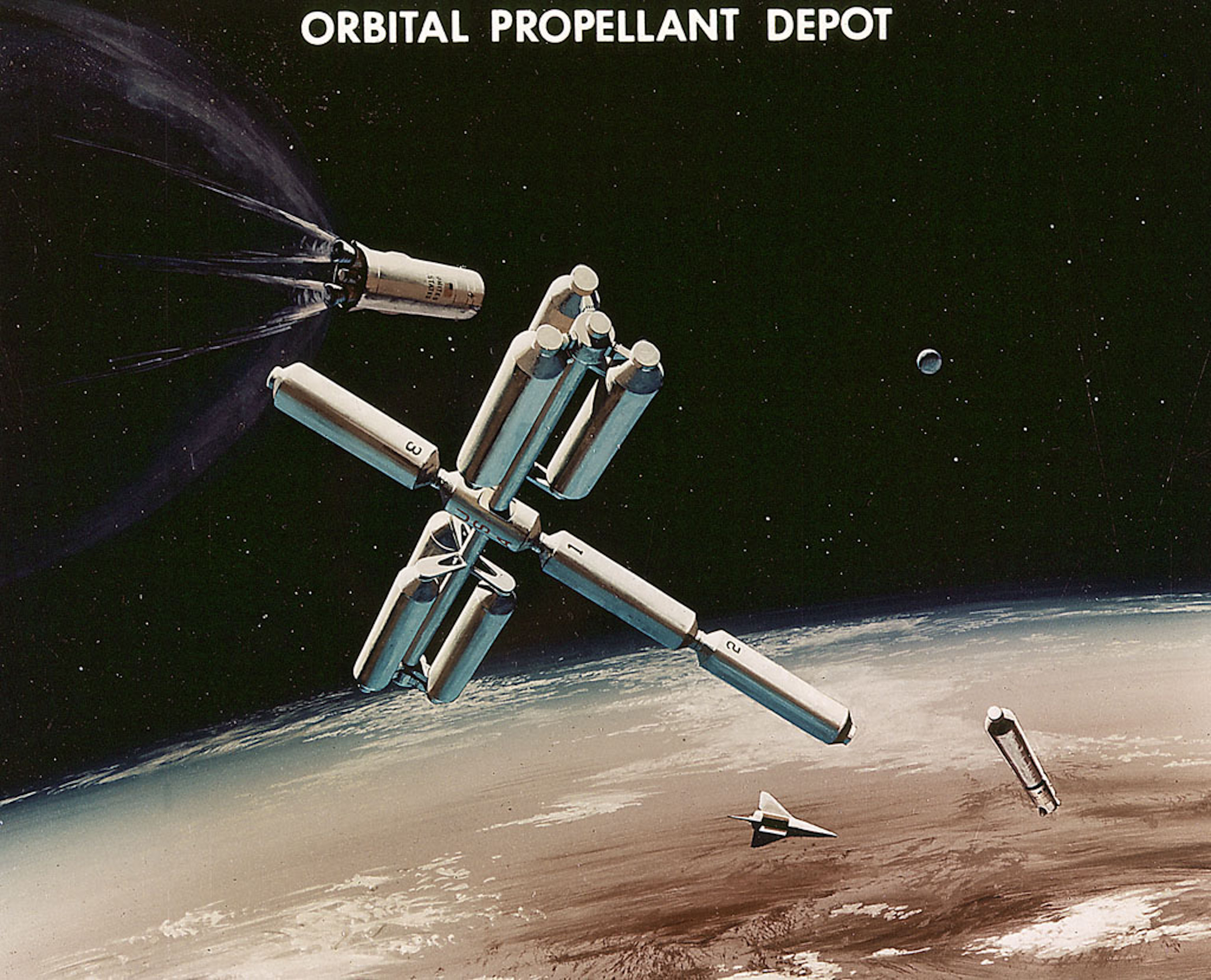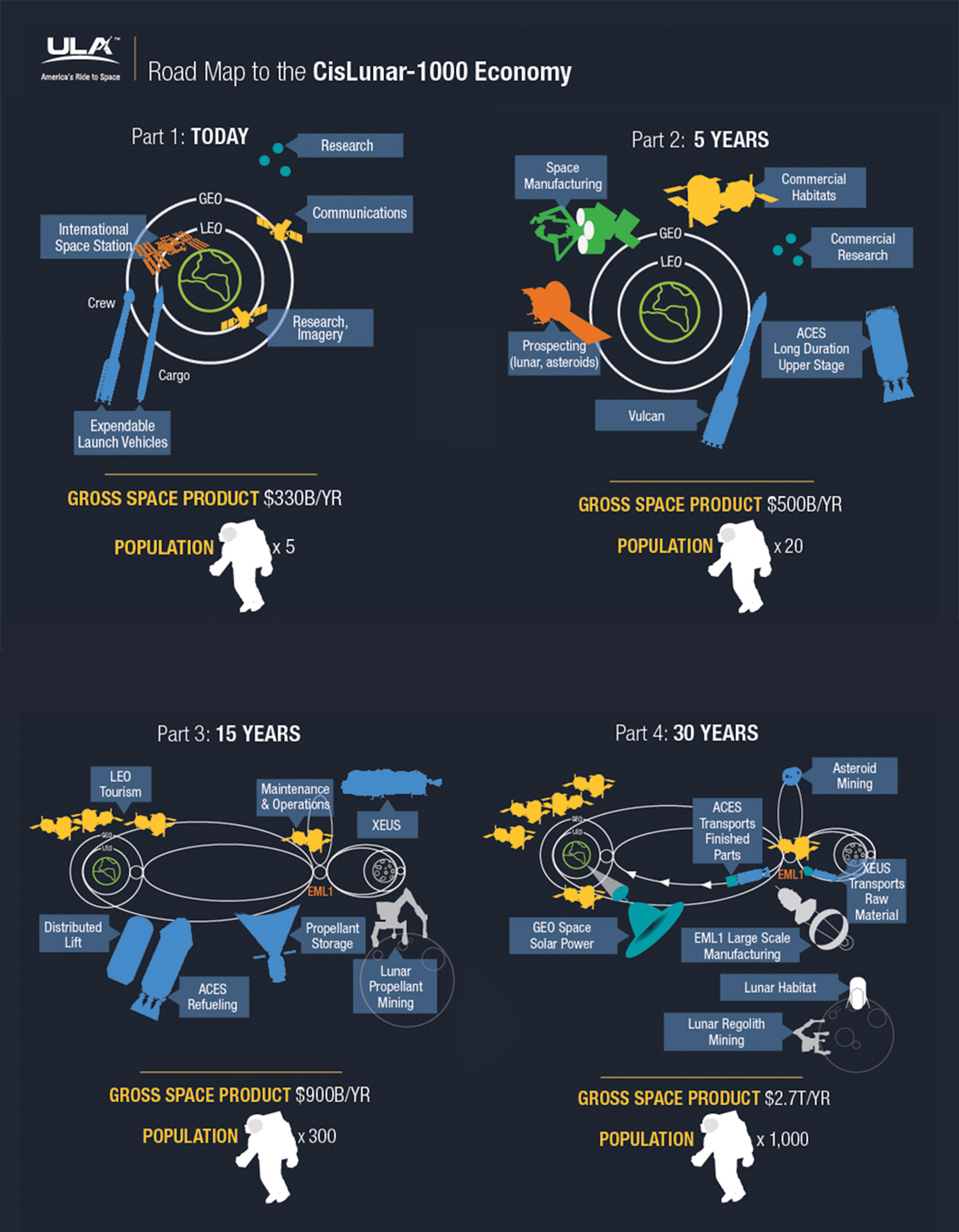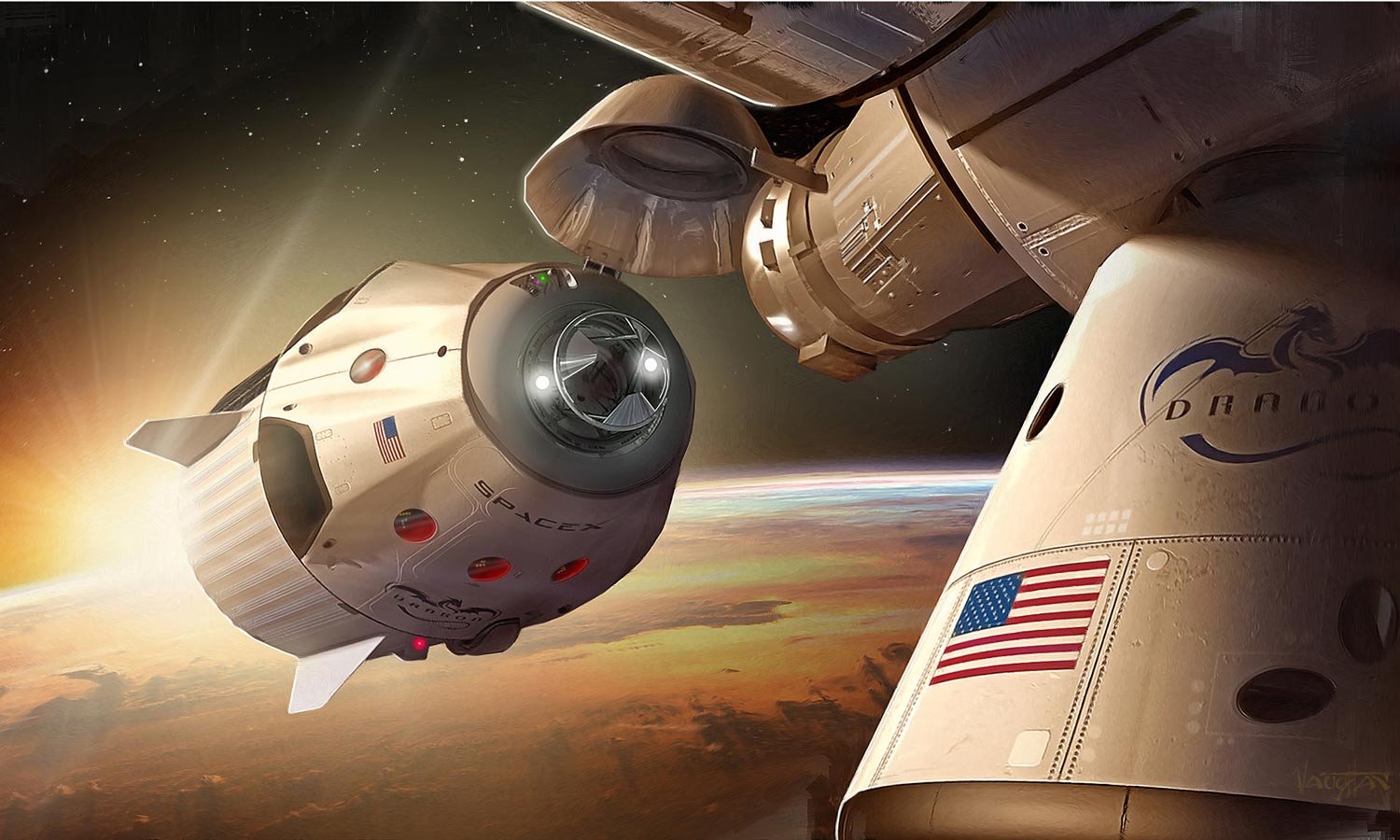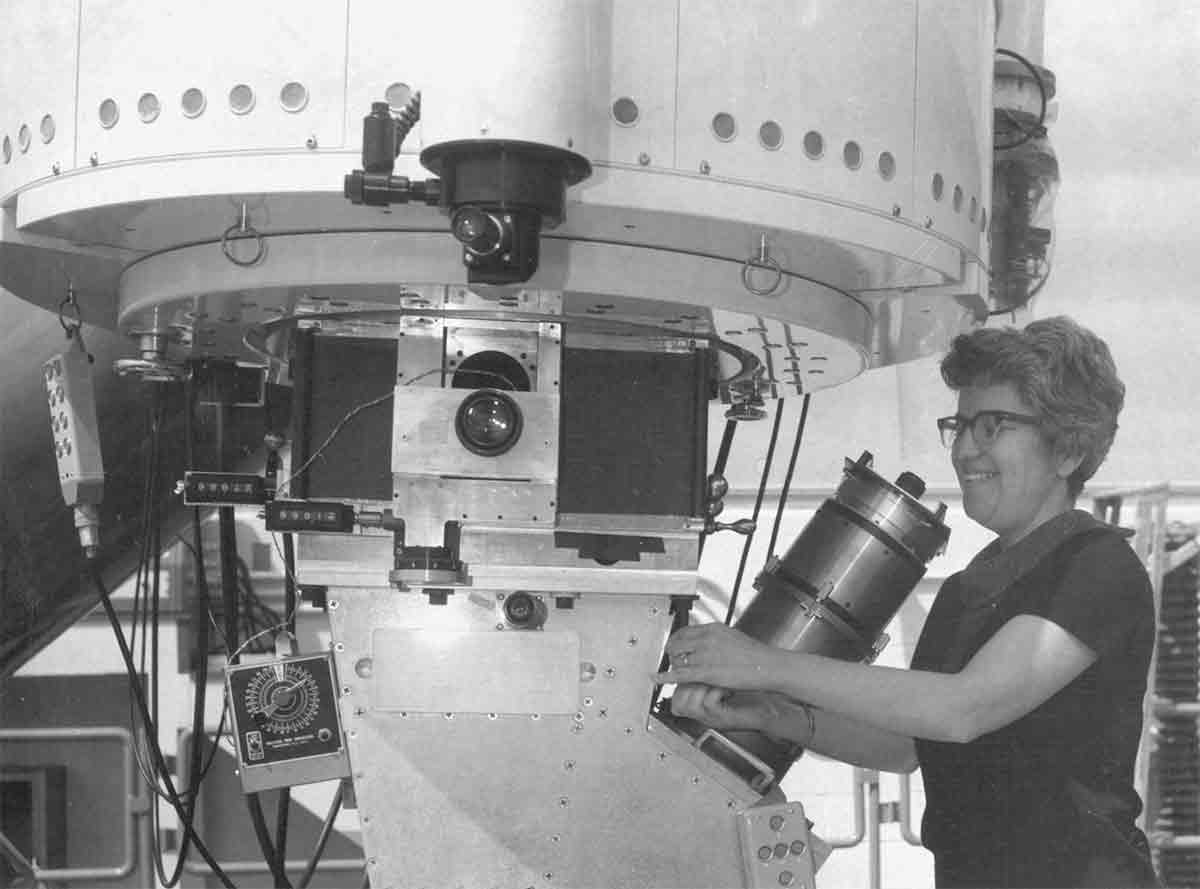Truck Stops in Space: Excerpt from 'Space 2.0' by Rod Pyle


Rod Pyle is a space author, journalist, and historian who has written thirteen books on space history, exploration and development for major publishers that have been published in seven languages. He is the senior editor of Ad Astra magazine, the quarterly print publication of the National Space Society, and his articles have frequently appeared in Space.com, Live Science, Futurity, Huffington Post, and Wired.
In his latest book "Space 2.0," out today (Feb. 26), Pyle gives an inside look at what's coming next for space exploration, resource extraction and settlement. This excerpt from Chapter 14, "Truck Stops in Space," discusses how infrastructure will be critical to human expansion beyond Earth.
Read on for the excerpt:
Related: Best Spaceflight and Space History Books to Read in 2019
Infrastructure is not a very exciting word. In terms of an advertising executive's priorities, it's got absolutely none of the flash and dazzle of a rocket launch or the first boots on Mars. But when discussing the new age of spaceflight, and the new commercial opportunities that are arising, it is everything. Infrastructure will make the development and settlement of space affordable and routine. It's the only serious path forward. That's why many people in the space trade talk about it with such passion. Infrastructure is what it's all about.
So what is space infrastructure, exactly? Perhaps a metaphor is called for. Space infrastructure is much like the services that make your daily life livable in modern society. When you arise in the morning, you flip a light switch — the electricity powering that is part of infrastructure. Taking a shower? Plumbed water is infrastructure. Back the car out of the garage to drive to work? Roads and freeways are infrastructure. You get the idea. The gas you stop for, the drive-through Starbucks, and the internet that sends you the 113 emails you plow through when you arrive at work — all are a part of the infrastructure of daily life.
Of course, the specific elements of space infrastructure that will be needed depend on how we proceed. We might first construct orbiting fuel depots, or perhaps orbiting bases for construction of gigantic structures. Private companies are planning to build orbiting hotels. Industry and university groups in both the US and China are studying solar-power satellites that could provide energy for operations in space as well as for uses on Earth. Some deep-space mission concepts will require way stations for assembly of vessels bound for Mars and beyond. The fleets of reusable rockets being built by SpaceX, and soon ULA and Blue Origin, are also parts of space infrastructure. These are just a few examples.
Breaking space news, the latest updates on rocket launches, skywatching events and more!
Space is such an immature industry, the idea of satisfactory infrastructure is comparatively basic. Instead of the freshly paved freeway, we'll take a two-lane highway. We still need fuel, but we'll settle for regular instead of premium. No snacks or five-hour energy drinks necessary — just give us the essentials to make this endeavor thrive. In essence, we need the equivalent of basic office space, hospitals, hotels, gas stations, railyards, and truck stops in Earth orbit and beyond. In the new space age, if we wish to proceed beyond the expeditionary model of human space exploration — short trips to reconnoiter other worlds and then a return home — robust infrastructure will be crucial. If we wish to expand the reach of our species beyond Earth, to live and work in space, infrastructure is, after affordable launch capabilities, the next critical milestone in the settlement of space. And for Space 2.0, the participants building this infrastructure hope that it will return them a profit over time, critical to private investment.
The National Space Society initiated its Space Settlement Summit in 2017, and it is now an annual event. In attendance the first year were a number of the top thinkers imagining and implementing Space 2.0, including private entrepreneurs, leaders within NASA, military officials, and individuals from the investment community. They were there not just to discuss space settlements — human outposts in space — but also issues related to the infrastructure needed to enable space settlement — the development of space in many forms, both robotic and human, for global benefit. The two are inextricably linked.
Like so many subjects in Space 2.0, it can be easier to envision the distant goals rather than the immediate ones. We want fuel depots in space, resource extraction to provide that fuel, manufacturing using other in-situ resources, outposts, way stations, communities, and so much more. But the first steps to achieving these goals are the most vexing.
Humans have spent the last six decades making expeditionary dashes into space. There were those first forays into orbit . . . the leap to the moon . . . then almost fifty years of orbiting the Earth, in both stations and spacecraft. But none of this is real infrastructure. The space shuttle had only limited reusability. Even the ISS is an interim step and only usable via continuous resupply from Earth. The ultimate goal of space infrastructure is the ongoing availability of the assets and resources needed to live and work in space, derived from space-based sources — water and building materials from the moon and asteroids, for example.
Related: Building Apollo (Photos)
One primary takeaway from the Space Settlement Summit was that no single answer can enable space infrastructure. There are a variety of plans and ideas, and we must collect and agree upon the best available subset of them and chart a path forward.
NASA contractor and NSS executive Bruce Pittman summarized the importance of infrastructure early in the proceedings: "The idea is to start a dialog regarding how to work within the solar system for the next fifty years. It will take more than rockets, so let's broaden the discussion. We need to talk about the deep-space economy. We know how to make money in GEO — geosynchronous Earth orbit — how can we close the business case beyond this?"
This statement framed an important question facing the entire space community, but in particular, the nonscientists. I say this because we can always formulate a rationale to go into space for science — NASA, ESA, and Russia's Roscosmos have been doing this for decades. But space science has always been supported by government and taxpayers, and is not inherently profit driven, though the spin-offs of the technological development it yields are tangible. Business in space will elevate economic returns measurably. Indeed, the telecommunications industry alone has made many billions in orbit, but to move humanity deeper into space and allow it to stay, a solid business model is critical — the term "deep-space economy" says it all.
In the earliest stages, this means using the resources that are easiest to reach in the simplest ways. Water from lunar soil and possible ice deposits on the moon, as well as water in asteroids, can potentially be utilized for fuel, potable water, breathable air, and rocket fuel. Martian ice deposits and its atmosphere contain the necessary constituents for the same commodities. Lunar, asteroid, and Martian soil can all be mined to create bricks, concrete, and 3-D printed structures. Metal, glass, and other elements can be extracted from each of these bodies as well. Ongoing work at the ISS and research facilities all over the world has demonstrated that edible plants can be grown and produced in weightless conditions, and on other planets, with the proper techniques. With sufficient stocks of seeds and some enhanced sources of proper nutrition carried along, food should not present a major problem.
So, if we envision a time in which we have enabled the development of these basic supplies, we can consider the next step. Pittman moved on to discuss a future where these resources have been extracted and stored in fuel depots. "If I've got a surplus of goods, I can start selling those to other people," he explained. "That's how you move the frontier forward, and the process continues. What we want to know now is how to accomplish this at the lowest cost and with the most flexibility."
Let's get more specific about what this really means. Not surprisingly, a lot of smart people have been thinking about various parts of large-scale space infrastructure for decades at NASA, at aerospace companies, and at universities. But funding for Space 2.0 is limited, and new initiatives on the scale of the Apollo lunar landing program are unlikely. Expensive taxpayer-supported space shuttles are a thing of the past, and we are unlikely to build another $150 billion space station with tax dollars. Sprawling infrastructure programs fall in the same category — government funding alone will not be enough. A new model must be found to facilitate the building of this infrastructure. While creating early infrastructure will doubtless depend on some NASA money, likely via business partnerships such as NASA's commercial agreements to resupply the ISS, private investment will ultimately drive this process forward.
An example of this kind of partnership was presented at the conference by George Sowers, a former ULA vice president and currently a professor at the Colorado School of Mines. The plan he discussed is called the CisLunar-1000, ULA's initiative to have 1,000 people living and working in space by 2045 in a self-sustaining economy. The plan centers on the ACES space tug, which you might recall from Chapter 9. ACES could be used to transport supplies — air, water, fuel, and more — from wherever it is mined in space to where it's most needed, and then stored in depots. Some of these depots will be in Earth orbit, others out by the moon, and some eventually near and on Mars.
Related: How Asteroid Mining Could Work (Infographic)
"There are [about] ten billion metric tons of water on lunar poles. We can start with refueling services," Sowers said. Water from lunar sources would be made into fuel, then stored. "This fuel availability provides for trade routes using ACES and XEUS." XEUS is a robotic lunar lander that will be able to transport useful supplies from the lunar surface to the storage depots.
While space entrepreneurs study ways to extract, transport, and store these resources, this may ultimately prove to be too risky for even the billionaires without government partnerships. Lori Garver, the former deputy administrator for NASA, feels that government partnerships with private industry are a good way to encourage sector growth. "I'm a huge believer in democracy and capitalism, and expanding those into space is a fabulous idea."
Some may see a contradiction in terms here — why should the government and, ultimately, taxpayers fund, or co-fund, these efforts, only to bring corporations profits in the future? Garver answers this question elegantly: "As we have seen in our capitalist society, the government invests in things that are hard, factors out some of the risk, and allows the private sector to move in and open up new markets. This will make spaceflight more competitive and means that we are going to space as a civilization as a fair and democratic society. So for me, a space program of the future just keeps expanding the envelope while private sectors come in and build behind it, and sometimes jump a little ahead, but they are in fact symbiotic." And, she continues, when the private concerns expand this infrastructure, the economic benefits ultimately come back to the nation that funded them, as was the case with railroads in the nineteenth century and airlines in the twentieth.
Our experiences on Earth have demonstrated that competition between entities, commercial or otherwise, drives innovation and growth. Space enterprise will be the same — competition between companies, large and small, will drive affordable access to reaching, living, and working in space, and will ultimately benefit national, then global, economies. Despite the billions invested by people such as Musk and Bezos, government will still have a large role to play, both in the US and internationally.
NASA represents the forefront of this kind of public-private partnership. No other national space agency has been faced with the rise of an entrepreneurial sector at the levels that have occurred in the US. As we have seen, this has already resulted in innovative and rewarding collaborations. But there's a sweet spot to be found in the relationship between NASA, the traditional aerospace companies, and the entrepreneurs. Identifying the correct blend will be one of the most profound challenges to NASA, and to the governments of other spacefaring nations, over the next decade or two.
The implication is that NASA would continue to transition from being a "we handle all major US space science and human spaceflight endeavors" agency to a "we work with you in space by doing the hard stuff first and investing in the private sector to do the rest" organization. NASA has always hired outside contractors — the traditional aerospace companies — to build most of its space hardware. Until the twenty-first century, this was primarily done with "cost-plus" contracts — contractors are paid for their expenses fulfilling the contract, then paid an additional sum to allow them a profit.
In the past decade, NASA has shifted some of its procurement away from this model and toward what is called "fixed-price contracting," along with other similar agreements, to work in improved ways with SpaceX and Boeing to fly astronauts to the ISS. The goal is to share risk and reward, and to induce contractors to invest more of their own resources in the development of new space technology. This allows NASA to contract out routine jobs, such as operating the ISS, launching rockets, and, eventually, establishing depots for space-derived fuels. NASA can then pursue the more exotic science and exploration-oriented deep-space missions — both robotic and crewed — it has been so successful with in the past.
The idea that NASA should help to underwrite the development of space infrastructure with cooperative agreements has wide support. The question, then, is how to best achieve this kind of collaboration. What would such NASA-led infrastructure look like? How are NASA's dollars spent versus private investment? Where do the NASA missions stop and the private, entrepreneurial ones begin? Who benefits and how?
Bill Gerstenmaier, Associate Administrator for Human Exploration and Operations for NASA, suggests a plan for blending NASA assets and those of private industry. "If somebody will build a lander, I've got the infrastructure. If I have a habitation capability, such as an Orion capsule, I can then potentially use private-sector cargo transportation to and from a facility on the moon. I've got all the infrastructure pieces that will enable someone else, for just a cost of a lander, to have a lunar surface capability. Then we would team with them . . . to get to and from the moon. This allows NASA to gain more experience on the surface of the moon. So I don't have to pay for that right up front; that's covered by the interests of another party that wants to do things there. That's our general approach."
In this model, NASA supplies the parts of a venture that it has already developed, or that make sense for it to develop, and private industry fills the gaps under cooperative public-private partnerships, eventually on its own dime. The growth of the communication satellite market provides some helpful examples here. The earliest versions flew in 1958 under NASA sponsorship. Then, in the 1960s, more satellites were sent into orbit, contracted by NASA and built by private contractors. In 1962, Telstar was the first privately launched communication satellite, a co-venture between AT&T, Bell Laboratories, the British and French national postal services, and NASA. Many others have followed.
An example of how this might evolve with regard to space infrastructure would be NASA providing the rockets to get to the moon, while private industry provides the landers and surface machinery for mining and processing resources there. This is exactly what Blue Origin is proposing with its Blue Moon lander, and Silicon Valley startup Moon Express with its lunar mining robots. The eventual expansion of such partnerships could see the mining of lunar ores and construction of structures with refined lunar material, with human occupants supported by moon-mined water and oxygen.
Related: Moon Rush: These Companies Have Big Plans for Lunar Exploration
Since 1985, pioneering astronaut Buzz Aldrin has spoken and written widely about his ideas for space transportation infrastructure. He envisions spacecraft that follow permanent orbits between the Earth and Mars, to significantly reduce the cost and complexity of sending large numbers of people and cargo to that planet. These spacecraft are called Aldrin Cyclers.
The primary goal in Aldrin's concepts is the permanent settlement of space by humans. He foresees a logical progression of capabilities for sustaining people on the moon and then Mars, increasingly distant enclave enabled by its predecessors, beginning with new laboratories in low Earth orbit. Evolutionary design is a key feature, as are the use of resources on the moon, artificial gravity, and a combination of high-efficiency and high-thrust transportation systems. International participation will be important. These approaches enable a robust and affordable way of moving people from the Earth to Mars: cyclers. 120
In Aldrin's designs, these cyclers use the gravity assist provided by Mars as they swing past the planet to return to Earth. Periodic trajectory corrections would be delivered by a propulsion system, either from chemical rocket engines or modern solar-electric engines, which use sunlight to power lower-output but longer-duration thrust. In either case, most of the flight is a "free ride."
The beauty of the cycler concept is that the large mass of the vehicle only needs to be launched and assembled once, and then it continues on its endless journey between worlds as long as it functions. Small shuttles would make runs from Earth to the cycler, then from the cycler to Mars as the cycler swings past its various destinations. Cyclers would be capable of carrying the life support equipment needed to sustain the crew. Even the requisite massive radiation shielding would no longer be an issue — materials from Earth, or found in space, need only be sourced once, then flown indefinitely. Larger cyclers could include centrifuges that would provide a low-gravity environment for the crew, which would help them to maintain health during extended spaceflight. Cyclers would fly in pairs, with one transiting the outbound leg while a second paralleled that course in reverse, traveling from Mars back to Earth, concurrently.
...
While infrastructure may not be an exciting word, it is certainly a thrilling prospect: The establishment of space-based resource extraction, transportation, and storage facilities near the Earth, moon, and eventually Mars will open the solar system to humans in ways previously seen only in science fiction. This will result not just in expanded opportunities to explore and develop space, but also in real benefits for people on the ground. Hundreds of thousands of jobs worldwide will need to be filled to support these endeavors, and the returns on investment in space will begin to take off in a big way once real infrastructure has begun to lower costs and increase opportunities. It's time to make this a reality.
- 'Amazing Stories of the Space Age': Q&A with Author Rod Pyle
- Inside ULA's Plan to Have 1,000 People Working in Space by 2045
- Buzz Aldrin to NASA: Retire the International Space Station ASAP to Reach Mars
You can buy "Space 2.0" on Amazon. Follow us on Twitter @Spacedotcom and on Facebook.
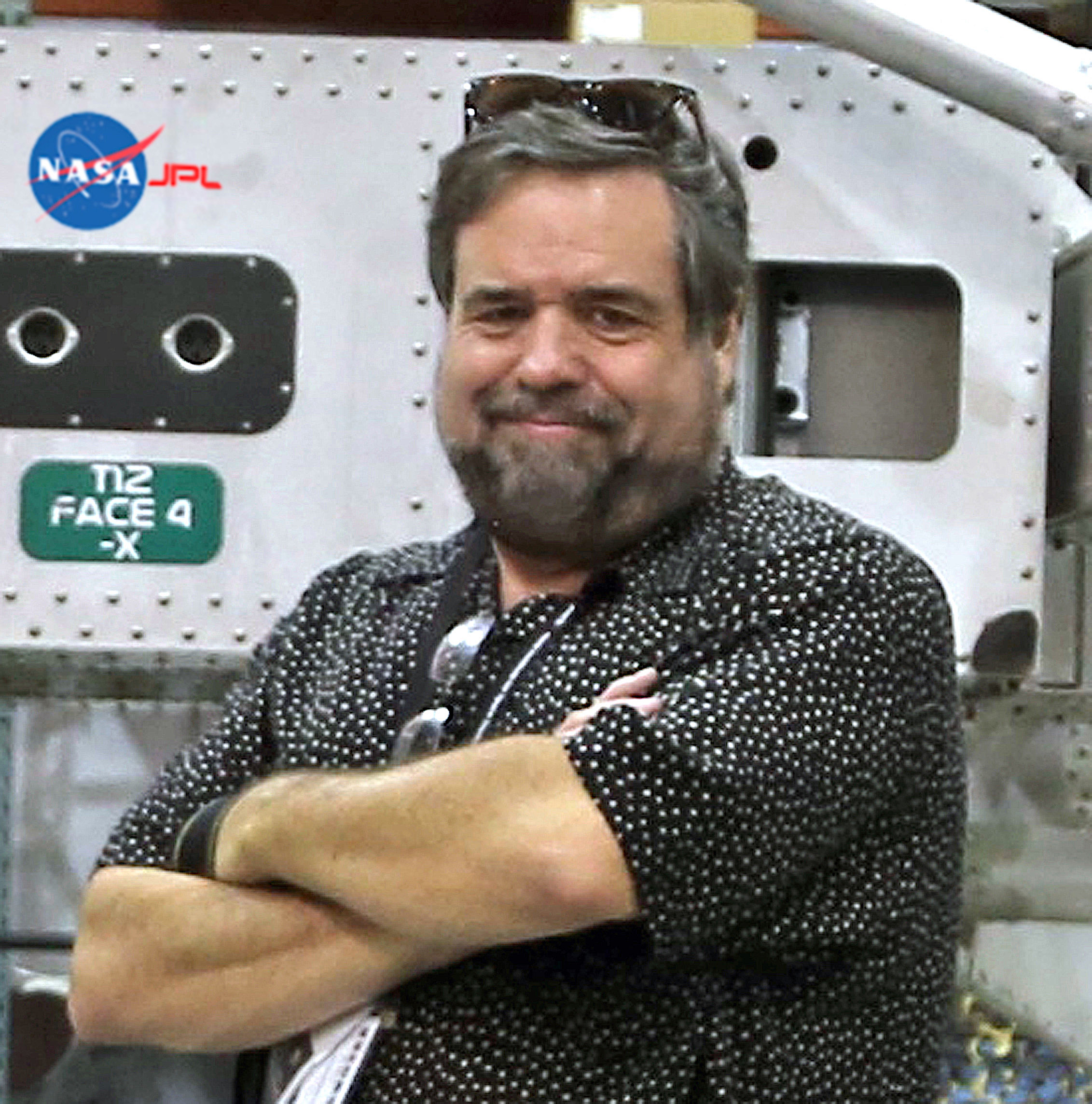
Rod Pyle is an author, journalist, television producer and editor in chief of Ad Astra magazine for the National Space Society. He has written 18 books on space history, exploration and development, including "Space 2.0," "First on the Moon" and "Innovation the NASA Way." He has written for NASA’s Jet Propulsion Laboratory, Caltech, WIRED, Popular Science, Space.com, Live Science, the World Economic Forum and the Library of Congress. Rod co-authored the "Apollo Leadership Experience" for NASA's Johnson Space Center and has produced, directed and written for The History Channel, Discovery Networks and Disney. For more information on the National Space Society, go to nss.org
